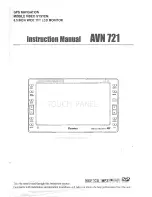
Baseband Technologies Inc.
Title: Stamp-size Ultra Low-Power GPS Receiver Module User Guide Rev 1.0
Page 31
A typical test scenario might be a replica of a sufficient number of satellites distributed in an open
sky environment with good Dilution-Of-Precision (DOP) and fairly good signal strength. In this
scenario, a target DOP value (e.g. 2) is used while the DOP changes over the duration of the
scenario. The signal strength can be modelled such that a satellite at 5° elevation would be
−
130
dBm as described in the GPS Interface Control Document (ICD). Lower signal strengths are only
seen when there is attenuation from obstructions, interference, or multipath.
A worst-case scenario is a replica of marginal number of satellites distributed in a signal degraded
environment (e.g. urban canyons) with poor DOP and poor signal strength. The intent of this
scenario is not truly worst case, where no solution is possible at all, but where the environment is
as degraded as possible yet the receiver is still reasonably expected to be operable.
A Radio Frequency (RF) constellation Simulator (“simulator”) that is capable of generating the
GNSS signals and output to the RF connector of the receiver under test is usually used to perform
tests as described above. Please contact us at
for further assistance.
4.3.1
Power consumption measurement
The Stamp Module was designed to enable customers to easily measure the overall
power consumption of the ultra low-power GPS baseband processing firmware and,
more importantly, to enable customers to manually adjust the user-programmable
settings to optimize the receiver performance according to the customer’s use-case.
4.3.1.1
Power measurement procedure
IMPORTANT NOTES
Prior to measuring the power consumption of the Stamp Module, it should have
already undergone the Authorization, Initialization and operating procedures as
outlined in section 3.
To accurately measure the board power consumption, all unnecessary components
should be turned off. Refer to @POWERSAVE for details.
Power the Stamp Module through the BAT pin using an external battery or a power
supply set at 3.7V when performing power consumption measurements.
When the Stamp Module is connected to an external power supply through the BAT
pin, battery charging must be disabled.











































